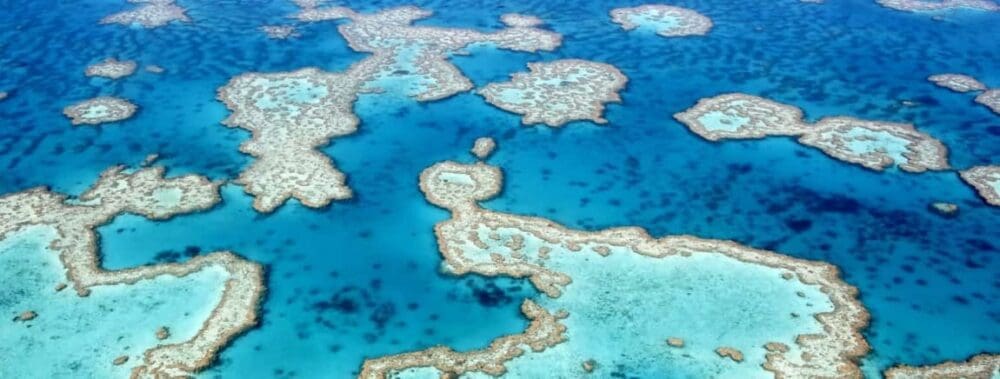By Australian Marine Conservation Society
- Australian and Queensland govts have made little progress in cutting Reef water pollution in two years, will miss 2025 pollution reduction targets by a long way
- Nitrogen pollution reduction target won’t be met until next century at current rate of action
- Reef Water Quality Report Card also shows 50,000ha of land cleared along watercourses leading to Reef waters
- Governments need to stop broadscale tree clearing in Reef catchments, and protect and restore coastal wetlands that trap sediment and filter water pollution
The Australian and Queensland governments urgently need to do much more to cut water pollution in the Great Barrier Reef waters, the Australian Marine Conservation said after today’s release of the latest Reef Water Quality Report Card shows little progress on the water quality targets in the Reef 2050 Water Quality Improvement Plan.
Australia will not hit the 2025 Reef water quality targets designed to protect the health of the Reef’s ecosystems, corals and seagrasses. The latest report card shows that the main water pollutants – sediment and fertilisers from farming and tree clearing – continue to run off into waterways in volumes detrimental to Reef health. Alarmingly, 47,519 hectares of land has been cleared in the most sensitive areas of the Reef catchment, along watercourses leading to Reef waters, counteracting the millions of dollars the government is pouring into repairing streambanks and gullies.
Cutting water pollution will improve the Reef’s health so it can better cope with the increasingly frequent and intense marine heatwaves driven by climate change.
AMCS Great Barrier Reef Water Quality Manager Dr Max Hirschfeld said: “The Great Barrier Reef has suffered its worst summer on record, facing cyclones, severe flooding, crown-of-thorns starfish outbreaks and its fifth mass bleaching event in the last eight years – the most extreme and most widespread we have ever seen. Our Reef needs a break.
“Global climate change is the biggest threat to our Reef, but water pollution is the most significant local threat and is entirely in Australia’s hands.
“It has never been more urgent to boost the health of the Reef in the face of increasing heat stress and coral bleaching, but this report card again shows minimal progress has been made in tackling this threat. It is clear the water quality targets will be pushed back again, the third time since their inception.
“What is especially alarming is that nearly 50,000 hectares of vegetation has been cleared along rivers and streams, which is so important in stabilising riverbanks and reducing erosion. It makes no sense for the governments to be spending so much effort and millions of dollars on remediating eroding gullies and watercourses, while allowing clearing to occur.
“The Queensland and Australian governments must urgently do more to cut water pollution in Great Barrier Reef waters. They need to stop broadscale clearing in Reef catchments, especially near watercourses, remediate eroding gullies and watercourses, and protect and restore coastal wetlands – the coast’s water filters that trap sediment and remove excessive nutrients.”
The Reef 2050 Water Quality Improvement Plan aims to cut dissolved inorganic nitrogen (DIN) levels by 60% by 2025, but to date nitrogen levels have been cut by less than half that amount, 28.4%, compared with the 2009 baseline. The latest Reef report card shows they were cut by only 0.7% in the two years to 2022, and at that rate the target will not be met until 2114.
Sediment is supposed to be cut by 25% by 2025, but it has only been cut by 16% after a 0.8% reduction in the past two years.
Dr Hirschfeld said: “Efforts to reduce the amount of nutrients from excessive use of fertilisers entering Reef waters have been falling well short. Excessive nutrients such as nitrogen can cause phytoplankton blooms that block vital sunlight for coral and seagrass growth and promote seaweed growth which competes with corals for space. At the current rate of nitrogen pollution reduction, we will not hit the 2025 target until we’re in the next century.
“Our governments need to urgently commit major funding to tackle nitrogen pollution and establish a coastal wetland protection and restoration program. The Queensland Government must ensure the Reef protection regulations, which were introduced in 2019 are fully funded and enforced.
“The water quality targets are currently up for review, but our governments can’t keep kicking the can down the road. The Reef has never needed help more than it does now. We must do more, faster to protect our Reef from water pollution and boost the resilience of Reef ecosystems and coastal communities to the impacts of climate change.”
Reef 2025 water quality targets
Sediment reduction target: 25%
Current progress: 16%
Current reduction rate: 0.4% per year
Year target will be met at current progress: 2046
Nitrogen reduction target: 60%
Current progress: 28.4%
Current reduction rate: 0.35%
Year target will be met at current progress: 2114
More information: Australian Marine Conservation Society – Press Release Featured image credit: Ayanadak123 | CC BY-SA 4.0




